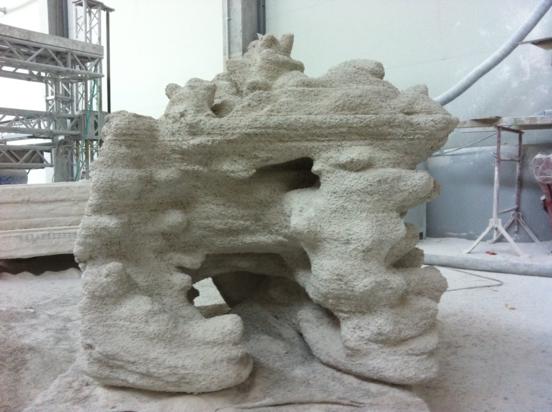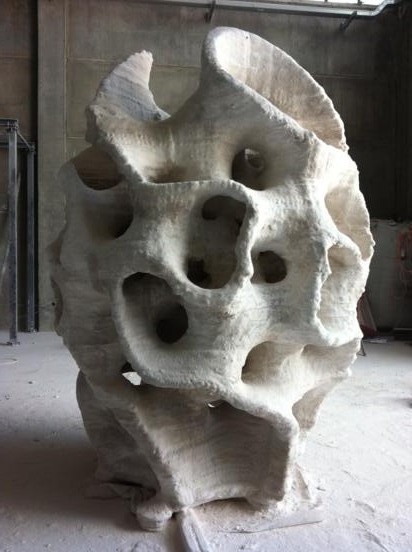Three scientists working independently each believe they have developed 3D building printing technologies which could transform the global construction industry.
The three men have each found a way to use 3D printing technology on such a large scale that entire buildings can be printed out of machines.
Two of the scientists are blessed with university positions and government funding. The academic who has been working on his method the longest is Behrokh Khoshnevis, a Professor of Engineering at the University of Southern California. His Contour Crafting process has produced 24 patents worth around US$1 million.
Meanwhile, in England, Dr Richard Buswell is leading a project by Loughborough University’s Additive Manufacturing Research Group to develop 3D Concrete Printing technology which uses cement-based mortars to create large structures.
 Finally, there is the Italian robotics expert, Enrico Dini, in Tuscany. Dini founded the Monolite UK company and hopes to produce and sell 3D printers under the name D-Shape. He is a lone wolf, operating independently of academic institutions. Without a salaried position, his journey has been the most traumatic, costing him his marriage and plunging him into crippling levels of debt. He has described it as a “journey to hell”.
Finally, there is the Italian robotics expert, Enrico Dini, in Tuscany. Dini founded the Monolite UK company and hopes to produce and sell 3D printers under the name D-Shape. He is a lone wolf, operating independently of academic institutions. Without a salaried position, his journey has been the most traumatic, costing him his marriage and plunging him into crippling levels of debt. He has described it as a “journey to hell”.
Another key distinction is that the Loughborough team is targeting the high end of the architectural market, whereas both Dini and Khoshnevis dream of making cheap housing in the third world.
Dr Buswell said: “We are focusing on producing double-curved panels for large buildings. Our techniques would be ideal for companies we are collaborating with, such as Foster + Partners and Buro Happold. They make funky but expensive buildings.”
Khoshnevis has a more epic global vision. “Contour Crafting would be of most benefit to developing countries to eradicate their slums and raise standards of living in the world,” he said.
And Dini shares Khoshnevis’s belief in his technology’s world-changing potential. “It could be used to build cheap houses in developing countries, but only once the printer is simplified to be managed like a tool rather than a machine,” he said.
Despite their differences, all three men believe passionately that 3D printing will eventually make a radical contribution to construction. But they acknowledge, too, that the technology is so ‘disruptive’ that the conservative construction industry has been slow to embrace it.
Khoshnevis said: “The construction industry is based on short-term planning. Construction companies would rather let someone else pay for the early-stage research and development, then use it.”
One final congruity is the belief that their technologies could combat global warming. “With 3D printing there’s no material waste and it’s a fully electric process,” said Khoshnevi. “But the main saving is people don’t have to drive back and forth to construction sites, which saves a massive amount of fuel.”
Khoshnevis was the first to envisage using 3D printing techniques in the construction industry after the Los Angeles earthquake of 1994 set him thinking about how it might help rebuild infrastructure. The challenge was dear to his heart as earthquakes plague his native Iran.
Khoshnevis’s computer-controlled crane, or gantry, operates on the same principles as much smaller commercial 3D printers which are widely used to build models in architects’ firms and can now be bought in shops for around US$1,000.
A robot squirts out thick liquid concrete through a nozzle at high pressure. The layers build rapidly, with the lower ones hardening enough to support the increasing weight. Trowels smooth the outer walls, while voids are created inside the walls by programming the nozzle to leave blank areas. Khoshnevis claims Contour Crafting can build a 200m2 single-story house in a day.
“Primarily, Contour Crafting can do three things better than traditional methods,” he said. “The first is to build structures with complex geometry, which fascinates architects. There are practically no limitations to the complexity of curvatures.
“The second application is to build remotely in dangerous, or inhospitable environments. It could build a protection wall against a damaged nuclear power plant, for example. The third use is to construct small structures in very small spaces.”
Khoshnevis’s most inspiring commission came last November when NASA awarded him a grant to build lunar structures as part of their NASA Innovative Advanced Concepts (NIAC). He has shown the feasibility of the concept with demos on lunar soil and the next step is to test it at the Desert Research and Technology Studies (D-RATS) facility in Arizona.
No less visionary is his more earthly aspiration to eradicate the world’s slums. Khoshnevis says this is possible because automation cuts costs dramatically.
“It’s the same principle as for expensive hand-made shoes. Automation brings costs down to 25% of manual approaches. In construction, labour costs are 50% of the total amount and they can be slashed almost to zero,” he said.
Loughborough’s 3D Concrete Printing (3DCP) process was also inspired by additive manufacturing. The Group was awarded £1.2 million five years ago to develop their ideas.
“Our real challenge was to take the additive techniques and scale them up massively,” Dr Buswell said. “Instead of doing something the size of a telephone, we’re working on building the wall of a building. That brings material and physical constraints.”
The Loughborough team built a 3D rig out of motors and chains inside a big square box measuring 5m by 6.6m. The nozzle can be positioned anywhere to obey the digital programme’s instructions.
Focusing narrowly on double-curvatures brought swift results. In 2010, the team manufactured the ‘Wonder Bench’, the world’s first reinforced concrete component with double curves. Then, in 2011, they developed the world’s first double-curved panels with conformal voids which were printed without casting.
The controlled environment at Loughborough is in stark contrast to Enrico Dini’s emotional journey which began in 2004 when he started work on his 3D printing technology with a couple of colleagues in a garage in Tuscany. For the first 18 months, his life descended into chaos as he juggled commitments all over Italy: His family and child were in Rome, his 3D research was in the centre of Italy and his full-time job as an expert in footwear robotics was in the north.
After much to-ing and fro-ing, he quit his job. “The ‘terrible date’ was November 2006, when I decided to make 3D printing my life’s work,” he said.
Dini set up a company in London called Monolite UK and moved to London to persuade London’s equity funds to invest. Meanwhile, he raised money by re-mortgaging his apartment for €75,000, borrowing €50,000 from his father, and using up €15,000 in savings. It was an enormous gamble and the company lost €1 million in eight months. He moved back to Italy two years ago.
“My life was a bloody hell. It cost me my savings, sent me into mountains of debt and destroyed my marriage,” he said.
Dini’s method differs from the other two by not requiring cement. D-Shape’s printers use a special inorganic binding ink and ordinary sand as the only raw materials. As the two components meet outside the nozzle, the machine does not clog up and can maintain its accuracy of 25 DPI.
“We do have quite a few purchase orders now: We’re selling printed sculptures at around €12,000 each and I’m sending printed lamps out to a Canadian client. We’re also creating artificial coral reefs for coral restoration in the south of Italy – we can print 3D reefs with lot of cavities inside to provide refuge for fish.”
“And we’re manufacturing cladding to put around concrete columns, but our income is still ridiculously low, around €10-15,000 per month. But this could easily be a multi-billion dollar business if we got the right investment,” he said.
Dr Buswell and Professor Khoshnevis do not face Dini’s financial anxieties, but they still crave more money. Dr Buswell’s funding runs out this year and he has to apply for more grants.
“We are at the prototype stage and how fast we go depends on funding. If someone said money was no object I’d say we could construct a building in two years,” he said.
Khoshnevis has enjoyed roughly US$3 million of investment for a variety of applications, but needs millions more dollars to perfect the techniques. “When we get the funding and the right infrastructure is in place, 3D printing will raise standards of living throughout the world,” he said.
Author: David W. Smith
This article is an edited version of a much longer article which was published by Construction Books Direct: See www.constructionbooksdirect.com/CRI/
 Constructionshows
Constructionshows

